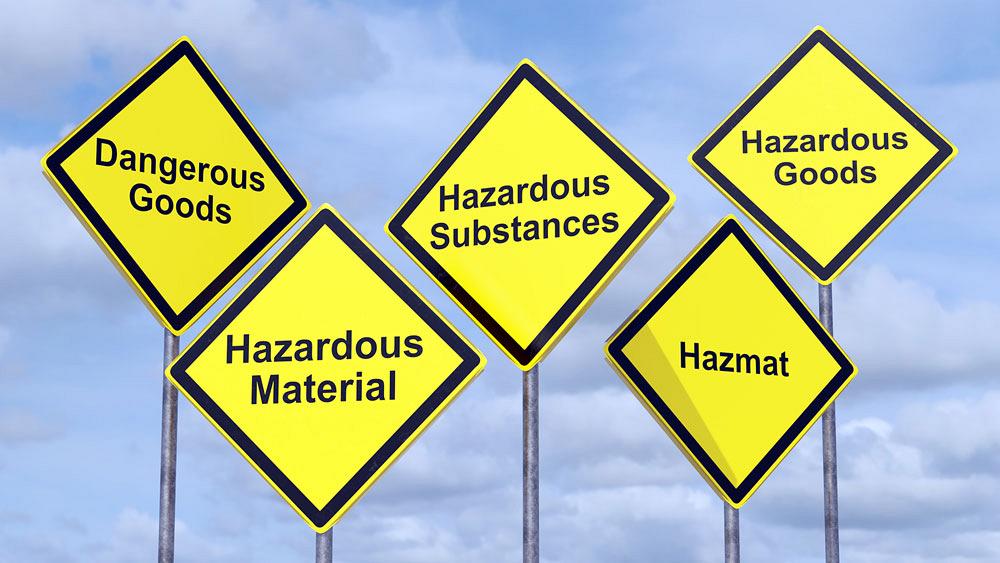- FMA
- The Fabricator
- FABTECH
- Canadian Metalworking
What you need to know about the latest WHMIS update
Canada has amended its Hazardous Products Regulations
- August 9, 2023
In December 2022, Canada amended its Hazardous Products Regulations (HPR) to align with the 7th revised edition and certain provisions of the 8th edition of the Globally Harmonized System of Classification and Labelling of Chemicals (GHS).
These amendments introduce some key changes to Workplace Hazardous Materials Information System (WHMIS) that employers, workers, and suppliers need to know. But don’t worry, the requirement to train workers on WHMIS, so they can protect themselves and others from hazardous products in the workplace, remains the same.
What Is WHMIS?
WHMIS is Canada’s national hazard communication standard. Created in 1988, its goal is to communicate important health and safety information about the hazardous products employers and workers may be exposed to while at work. It remained relatively unchanged until 2015, when it was updated to align with the 5th edition of the GHS.
Since then, Canada’s amended legislation on WHMIS has been known as WHMIS 2015.
As further updates are expected over time, WHMIS 2015 will now be referred to simply as WHMIS, and versions of the HPR will be distinguished with the terms former and amended.
Key WHMIS Changes
For most workplaces, the notable effects of the transition from WHMIS 2015 to the amended WHMIS is the adoption of a new physical hazard class (chemicals under pressure), the adoption of a non-flammable aerosols hazard category (Aerosol - Category 3, non-flammable aerosol), and new subcategories for flammable gases.
A full breakdown of the changes and a comparison with WHMIS 2015 is available on the Health Canada website.
Revisions also have been made to the information elements required on safety datasheets, primarily modifications to the required elements in the physical and chemical properties in Section 9.
New and more specific elements have been introduced, including physical state, colour, particle characteristics, kinematic viscosity, and relative vapour density. Some elements were removed, including odour threshold and evaporation rate. A safety datasheet can still provide these elements as additional information, as long as it is not false or misleading.
Another amendment specifies that all hazardous ingredients that are present in a mixture at concentrations above the relevant cutoff levels must be disclosed, regardless of whether the hazardous ingredient contributes to the classification of the mixture as a hazardous product or not.
Safety Education and Training
Employers in every industry that use, store, and handle hazardous products now need to update their education and training programs to help workers learn about and understand the new WHMIS changes. In addition to these legislative requirements for education related to hazardous products, you must continue to provide training that is specific to workers’ jobs, your work site, and your workplace safety procedures.
Knowledge is power when it comes to hazardous products.
These amendments are designed to provide more comprehensive and detailed health and safety information on product labels and safety datasheets, which provide better protection for workers. They also help Canada meet its international commitment under the Canada-United States Regulatory Cooperation Council Joint Forward Plan.
Aligning with certain requirements of the revised editions of the GHS also brings significant trade benefits for suppliers by harmonizing label and safety datasheet requirements for hazardous products.
Transition Period
Suppliers have until December 14, 2025, to bring their safety datasheets and labels into compliance with the amended regulations.
During this three-year transition period, regulated parties can choose to comply with either the former HPR or the amended HPR, but not both. It’s important to note that the hazard classification, safety datasheet, and label of a hazardous product must be fully compliant with the version of the regulation chosen.
This requirement means that for a product to be compliant with the amended WHMIS, both the safety datasheet and the label must meet the requirements of the amended WHMIS.
Consult Your Local Authority
Employer obligations for hazardous products are set out in federal, provincial, and territorial occupational health and safety legislation. For information on how your jurisdiction is handling the transition period and how you can update your health and safety procedures accordingly, contact the appropriate federal, provincial, or territorial occupational health and safety regulatory agency.
You can also sign up to be notified when Health Canada publishes new WHMIS updates at whmis-simdut@hc-sc.gc.ca.
Understanding how WHMIS has changed and ensuring workers are informed are essential steps to providing a safe working environment. By taking a proactive approach to training and education, employers and workers can be equipped with the information needed to help keep everyone safe.
This article was supplied by the Canadian Centre for Occupational Health and Safety (CCOHS), 135 Hunter St. East, Hamilton, Ont. L8N 1M5, 800-668-4284, www.ccohs.ca.
subscribe now


Keep up to date with the latest news, events, and technology for all things metal from our pair of monthly magazines written specifically for Canadian manufacturers!
Start Your Free Subscription- Trending Articles
Automating additive manufacturing

Sustainability Analyzer Tool helps users measure and reduce carbon footprint

CTMA launches another round of Career-Ready program

Sandvik Coromant hosts workforce development event empowering young women in manufacturing

GF Machining Solutions names managing director and head of market region North and Central Americas

- Industry Events
MME Winnipeg
- April 30, 2024
- Winnipeg, ON Canada
CTMA Economic Uncertainty: Helping You Navigate Windsor Seminar
- April 30, 2024
- Windsor, ON Canada
CTMA Economic Uncertainty: Helping You Navigate Kitchener Seminar
- May 2, 2024
- Kitchener, ON Canada
Automate 2024
- May 6 - 9, 2024
- Chicago, IL
ANCA Open House
- May 7 - 8, 2024
- Wixom, MI
















